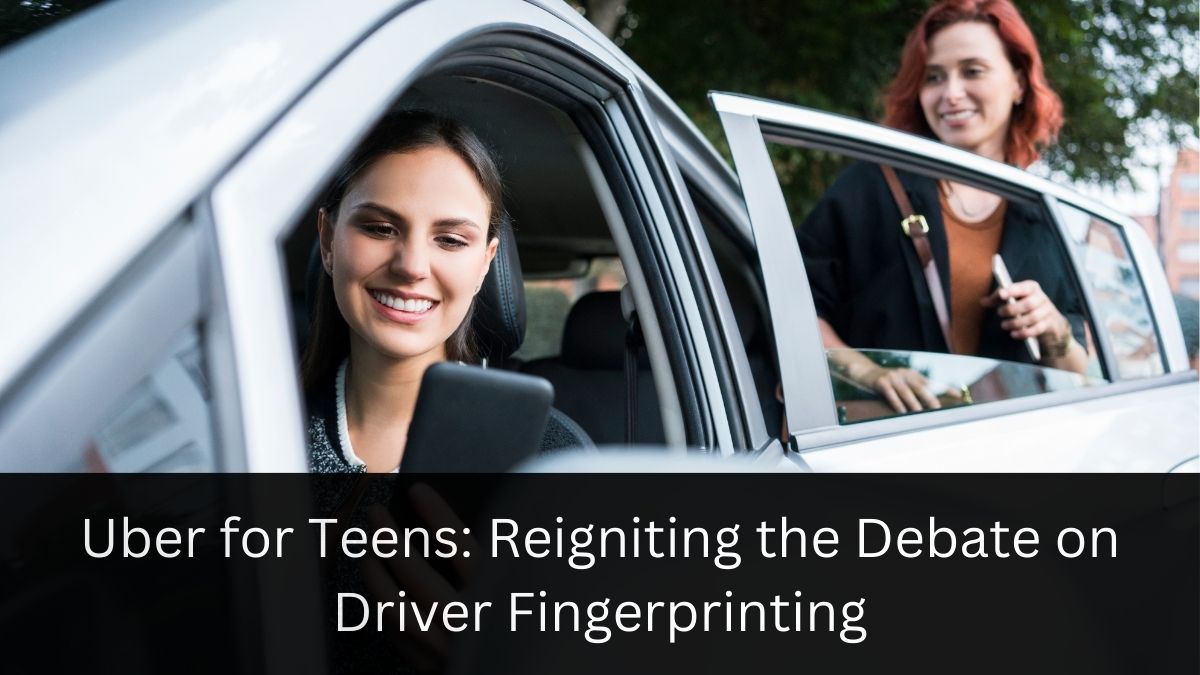Press Release
Uber for Teens: Reigniting the Debate on Driver Fingerprinting

In the ever-evolving landscape of ride-hailing services, a new controversy has emerged, challenging the delicate balance between convenience and safety. Uber’s recent launch of its teen-focused service has inadvertently rekindled a long-standing debate over driver background checks and fingerprinting requirements. This development has not only caught the attention of regulators but also sparked discussions among industry players and safety advocates alike.
The Birth of Uber for Teens
Earlier this year, Uber unveiled a groundbreaking service tailored specifically for teenagers. This innovative offering allows youngsters aged 13 to 17 to book rides independently, albeit under the watchful eye of their parents’ accounts. While this service aims to provide a convenient solution for busy families, it has also raised eyebrows and prompted serious questions about rider safety.
As a parent myself, I can’t help but feel a mix of excitement and apprehension about this new service. The convenience it offers is undeniable, but the thought of my child getting into a stranger’s car still sends a shiver down my spine.
Revisiting the Fingerprinting Debate
The launch of Uber for Teens has unexpectedly resurrected a contentious issue that many thought was long settled. Seven years ago, Uber and Lyft successfully thwarted efforts to mandate fingerprinting for their drivers in California. However, the introduction of a service specifically targeting minors has forced regulators to reassess their stance.
The 2016 Ruling and Its Implications
At the heart of this renewed debate lies a 2016 ruling by the California Public Utilities Commission (CPUC). This ruling stipulated that any transportation network company “primarily transporting minors” would be required to implement stringent background checks for drivers, including fingerprinting. The ambiguity surrounding the term “primarily” has now become a focal point of discussion.
Uber, in its quest for clarity, reached out to the CPUC seeking a more precise definition of this term. This seemingly innocuous inquiry has opened a Pandora’s box of regulatory scrutiny and public discourse.
The Stakeholders and Their Positions
Uber’s Stance
Uber maintains that its current background check system, coupled with additional safety features incorporated into the teen service, provides adequate protection for all riders, regardless of age. The company argues that its comprehensive screening process, which includes checks for criminal convictions and continuous monitoring of drivers, negates the need for fingerprinting.
A spokesperson for Uber emphasized that teen rides currently constitute less than 10% of their total rides, thus falling short of the “primarily” threshold mentioned in the 2016 ruling.
HopSkipDrive: A Competitor’s Perspective
In an interesting twist, HopSkipDrive, a startup specializing in transportation services for children, has seized this opportunity to advocate for stricter regulations. The company argues that Uber should be held to the same stringent standards as other services catering to minors, regardless of the percentage of teen rides in their overall business.
Trish Donahue, senior vice president of legal and policy at HopSkipDrive, passionately stated, “To limit those requirements suggests that even one child, riding alone, shouldn’t be protected to the highest standards of safety.”
The Role of Trustline
Central to this debate is the Department of Justice’s Trustline program. This registry, maintained by the California Department of Social Services, uses fingerprinting to screen caregivers for criminal history and checks applicants against the Child Abuse Central Index. The question now is whether Uber should be required to participate in this program for its teen service.
The Fingerprinting Conundrum
Uber’s resistance to fingerprinting is not new. The company has long argued that such requirements create unnecessary barriers for potential drivers, potentially limiting the pool of available workers. They’ve also raised concerns about the accuracy and fairness of fingerprint-based background checks, particularly their impact on minority communities.
However, proponents of fingerprinting argue that it provides an additional layer of security that cannot be replicated by other screening methods. They contend that the inconvenience to drivers is a small price to pay for enhanced rider safety, especially when it comes to protecting vulnerable minors.
Safety Features and Alternatives
In response to safety concerns, Uber has implemented several features specific to its teen service:
- Only highly-rated, experienced drivers are eligible to transport teens.
- Live trip tracking is mandatory for all teen rides.
- Teens must provide a unique PIN set by their parents before starting a trip.
- Audio recording is required for all teen rides when microphone permissions are granted.
These measures, while impressive, have not fully quelled the concerns of critics who argue that fingerprinting provides an irreplaceable safeguard.
The Road Ahead
As the CPUC continues to gather public comments on this issue, the future of teen ride-hailing services hangs in the balance. The commission’s decision will likely have far-reaching implications not just for Uber, but for the entire ride-sharing industry.
This debate serves as a stark reminder of the complex challenges that arise as technology continues to reshape our daily lives. It forces us to grapple with difficult questions about the trade-offs between convenience and safety, and the role of regulation in an rapidly evolving digital landscape.
As we await the CPUC’s ruling, one thing is clear: the conversation about rider safety, particularly for minors, is far from over. It’s a discussion that will continue to evolve as new services emerge and our understanding of digital safety matures.
In the end, whether through fingerprinting or alternative measures, the ultimate goal must be to create a transportation ecosystem that parents can trust and that keeps our children safe. As both a technology enthusiast and a parent, I’ll be watching this space with keen interest, hoping for a solution that balances innovation with uncompromising safety standards.
